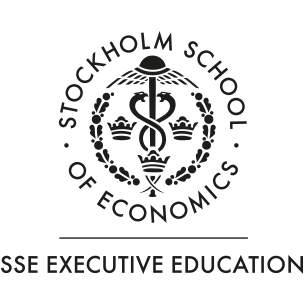
Demanding customers and hungry employees – survival strategies for the consultancy industry
The whole of society is facing explosive changes and the consultancy industry is no exception. We interviewed Carl Lindeborg, Program director of Managing Professional Services (MAPS) about what professional services companies, i.e. consultancies and other businesses offering knowledge-intensive services, should be thinking about and doing to stay relevant in times of change.
Businesses in the services sector are clearly competing on two markets simultaneously – for customers and for talent. These two markets are completely interdependent – customers demand relevant, high quality services and businesses need the talent (consultants) capable of delivering value to customers. Both markets are experiencing rapid transformation.
New expectations, actors and pricing
On the customer side, the requirements and expectations are changing as new solutions and competitors break into the market. Developments in digital technology and AI are making it possible to process large amounts of data and to monitor and analyze the prevailing situation faster than ever before. Actors with a focus on technology are making inroads into the market by offering new ways of working or new types of services. And this is pushing prices down.
Carl points out that this trend has already had a major impact on IT companies, auditors, legal firms and communication agencies, and thinks that most people working with professional services will have identified the way the wind is blowing and be wondering about the impact these changes will have on their own industry. There is also mounting concern at perhaps having missed the boat.
“The professional services companies that are not quick enough on their feet or sufficiently flexible risk losing market share and customers to new or more forward-thinking competitors.”
Talent today, and especially tomorrow
Much of the concern derives from the difficulty of predicting what the future will look like. Of course, this is not a new problem but today even the immediate future looks extremely unclear. So as a consultancy, how do you know what to invest in today, that will be relevant and produce dividends tomorrow? Or rather who to invest in?
Carl thinks we are facing a new talent management paradigm. The recruitment programs and systems that traditional actors have used are a poor fit for the way we will need to think about talent management in the years ahead. Classic talent management tools presume a stable organization and their focus is retrospective, with questions such as “What were you thinking and what would you have done differently today?” instead of “How do you think you will handle this in the years ahead?”. The tools of the future will need a different focus, because with an ever-increasing pace of change, there is no guarantee that lessons learned in the past can be relied on any longer.
Another important question concerns the expertise that will be in demand in the future. It is likely that, within the space of a few years, many common tasks will be carried out by machine rather than people. So, what should we be thinking about so as to best future-proof our recruitment and skills development?
Relationships that foster development – a survival strategy
The consultancy companies that make development potential their guiding principle in the customer market and the talent market will be one jump ahead, in Carl’s view. The service organizations of tomorrow will need to be much more self-organized, adaptive and flexible. It will be more important than before to build relations with customers and partners in which both parties can develop, change and grow, and where you can identify challenges and find solutions that you then test and fine tune together.
Ask yourselves: Which customers can help us develop in the way we need to go? Yes, this will demand a lot more and cost a lot more than chasing margins and doing more of the same things you have always done.
“You won’t develop fast enough doing the things you already do. Major social change will demand major changes for businesses.”
This does not mean that you have to throw everything out of the window and start again from scratch with each new customer project. Organizing your business and your services around flexibility, e.g. through project-based organization and modularization, will be key to better adaptability.
“Will” as important as “skill”
When it comes to talent management, shift your sights from skills and competences to developability and the hunger to learn new things and grow. Focus on people who are driven self-starters and keep them engaged. The future will demand a great deal of the people you recruit. Existing competences are only one component to weigh against e.g. people skills, the skills the person wants to develop, and a constantly inquiring eye on the surrounding climate.
Nurture a culture with customers and employees alike in which you are brave enough to risk failure together, with a focus on the development potential of failure. If you never fail, there’s a major chance that you do not have what it takes to cope with the sheer amount of change that long-term success will demand.
Carl’s survival tips for the consultancy industry – in brief
- Keep a close eye on developments in your own industry and in others, in the technology landscape and in research.
- Put this question on the agenda: “In what ways will we need to be something today or tomorrow that we have never been before”.
- Build relationships that encourage both parties to develop: Find customers and customer contexts in which you are challenged and forced to be innovative together with the customer. Ask yourselves: Which customer can develop us in the direction we want to go?
- On the talent side: Work not just to attract the right skills but to attract people with the drive and capacity to develop.



